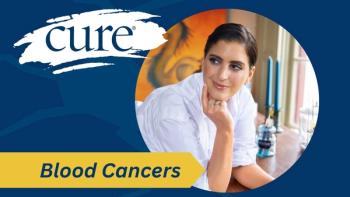
Opinion: Breast Cancer's Pink Isn't Black and White
How has the most successful cancer awareness movement become so polarizing?
Every October, a wave of pink descends upon the United States in the name of breast cancer awareness. For some, “Pinktober” signifies a time to remember struggles overcome or loved ones lost. For others, the ubiquitous pink ribbon is a stark reminder of a present battle, leading them to be skeptical of its use for for-profit gains. How has the most successful cancer awareness movement become so polarizing? And, how does an organization focused on inspiring action to improve breast health 365 days a year find its place in this mix?
Pink October
When you think about Breast Cancer Awareness Month, you probably think about pink ribbons, pink products, pink skylines and pink jerseys. You may recount questionable Breast Cancer Awareness Month campaigns like KFC’s
A Case for Awareness Month
Awareness isn’t wrong. It just isn’t enough.
If the ultimate goal is to have fewer people dying from breast cancer, we have to bring women along a journey. Breast cancer awareness, whether during October or any month of the year, is the first critical building block to enabling health behavior change. Pink products, promotions and marketing serve as visual entry points. But what comes next is where the magic happens.
Bright Pink aims to translate awareness to meaningful action. While the disease affects 1 in 8 women on average in the US, we know that when detected early, the five-year survival rate can be greater than 98 percent. We also know that 80 percent of breast cancers in young women are self-discovered and then confirmed by a doctor. So the power is truly in our hands. We need more women to be aware of these facts AND how to act on them.
Shifting the Pink Paradigm
Bright Pink works 365 days a year to empower women to live healthier, happier, longer lives by managing their health proactively. We’re redefining how women engage with the pink movement. Rather than passively engaging in honor, memory or celebration of someone else, we’re enabling women to actively engage in their own health management. Bright Pink’s fresh approach exists to shift the pink paradigm from awareness to action. We engage women in advocating for their own health by practicing breast self-awareness, assessing their risk, adopting risk-reducing healthy habits and partnering with a trusted health care provider.
That’s why our Breast Cancer Awareness Month campaign encourages women to get into the habit of checking in with their breasts on a regular basis to establish what’s normal for their body and better detect when something is off. We are asking all women to
Partnerships with a Purpose
When we evaluate October corporate partnerships, education must have equal footing to fundraising. Any young woman that purchases a partner’s product will also receive facts about breast cancer incidence and prevention, or be directed to an educational resource.
For example, we’re proud to work with partners like Paul Mitchell The School which raises critical funds to further our mission and enables us to reach thousands of students with breast and ovarian health education.
We also partner with the WNBA for Breast Health Awareness Week in August. Over 11,000 WNBA fans have completed our
As October rolls around each year, organizations have the power to make a greater impact by helping women take the next step. Knowledge is power, and we can only improve health outcomes if we motivate informed individuals to action and stay aware of breast cancer risk November through September.
Editors’ Note: We invited our advocacy partner, Bright Pink, to submit this column in response to several




